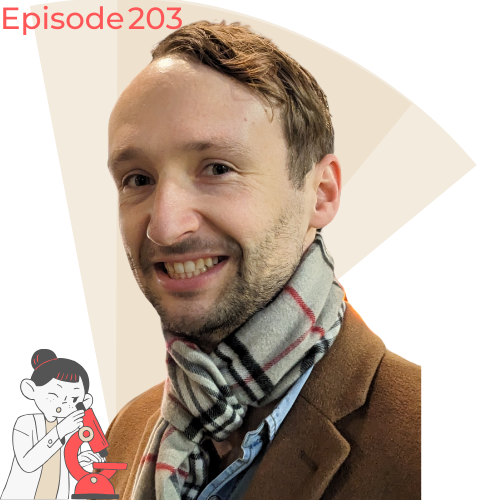What to Expect:
In this episode, Steve Streets shares his innovative research on using nanotechnology to develop treatments for diseases. Steve discusses his journey from studying biology to conducting nanomedicine research and his work on developing nano hockey sticks to target diseases at the cellular level.
About the Guest:
Steve Streets
Steve Streets is a researcher specializing in nanomedicine. His work involves using nanotechnology to develop innovative treatments for various diseases. Steve’s research aims to harness the power of nanotechnology to improve healthcare outcomes.

🌟 Key Takeaways from This Episode:
- Nanomedicine: Steve’s research focuses on using nanotechnology to develop treatments for diseases.
- Career Journey: From studying biology to conducting nanomedicine research in the United States.
In This Episode, We Cover:
Steve’s Research :
focuses on using nanotechnology to develop innovative treatments for various diseases. By designing nano hockey sticks, he can target and treat diseases at the cellular level, providing new and effective solutions for healthcare.
Steve’s Career Journey :
Steve’s academic journey began with a Bachelor’s in Biology. He pursued his passion for nanomedicine, leading him to his current role as a researcher in the United States, where he focuses on using nanotechnology to improve healthcare outcomes.
Steve’s Favourite Research Experiment :
Steve’s favorite experiment involves developing nano hockey sticks to target and treat diseases at the cellular level. This research has significant implications for creating new and effective treatments for various medical conditions.
Life as a Scientist-Beyond the Lab :
Steve values the collaborative nature of scientific research and enjoys engaging with the global scientific community. He is passionate about teaching and mentoring the next generation of scientists.
Steve’s 3 Wishes
- Increased funding for research: Steve wishes for more financial support to advance innovative research projects.
- Greater collaboration between researchers: He advocates for stronger partnerships to enhance knowledge sharing and collaborative efforts in research.
- Improved public understanding of scientific research: Steve emphasizes the importance of public awareness and support for scientific advancements.
Steve’s Time on @RealSci_Nano :
Steve will be taking over the RealSci_Nano Twitter account to share his research on nanomedicine. Followers can expect to learn about the innovative techniques and treatments his work focuses on.
Join the Conversation
Follow & listen to “Under the Microscope” on Spotify, Apple Podcasts, Castbox, Amazon Music, Goodpods.
Got your own favourite podcast app? Follow the RSS link to find Under the Microscope.
Watch the video of all Under the Microscope episodes on The Science Talk’s YouTube channel. While you are at it, make sure to subscribe to our YouTube Channel.
Learn more about Under the Microscope – https://thesciencetalk.com/under-the-microscope/
We also offer partnerships to scientists, research institutions, industry, funding bodies & societies.
Get in touch to start the conversation.
